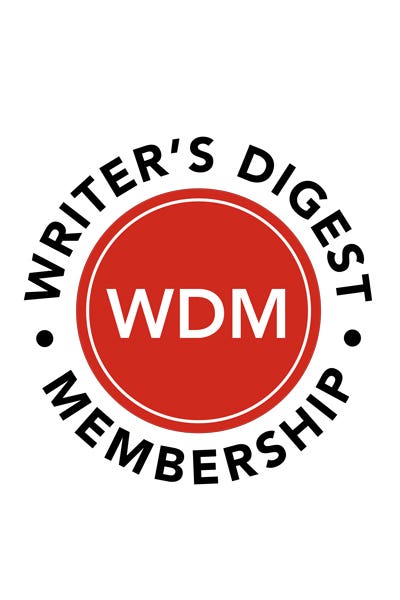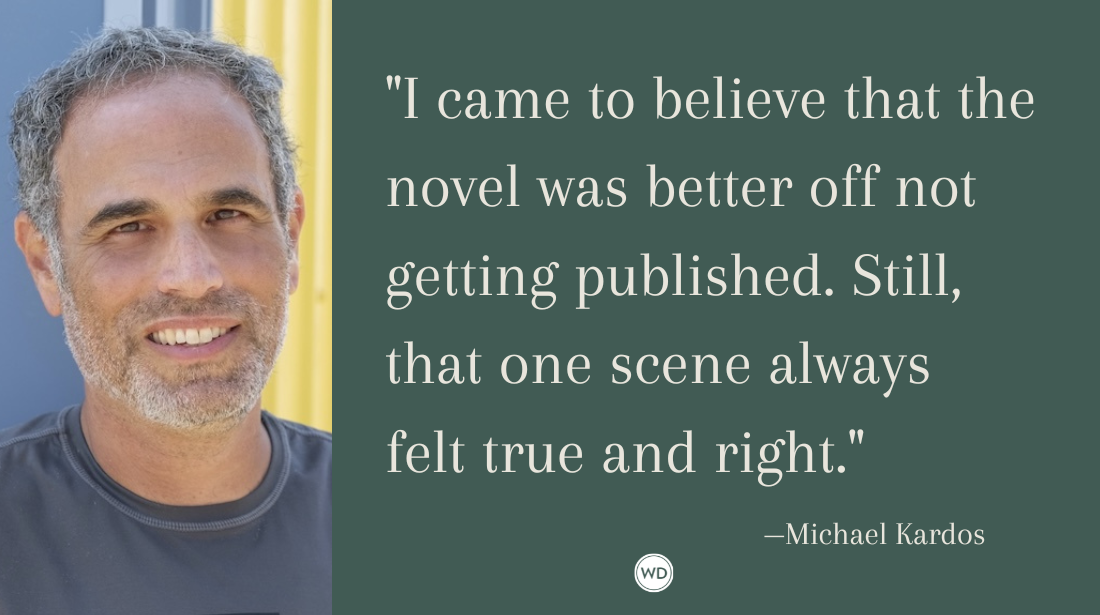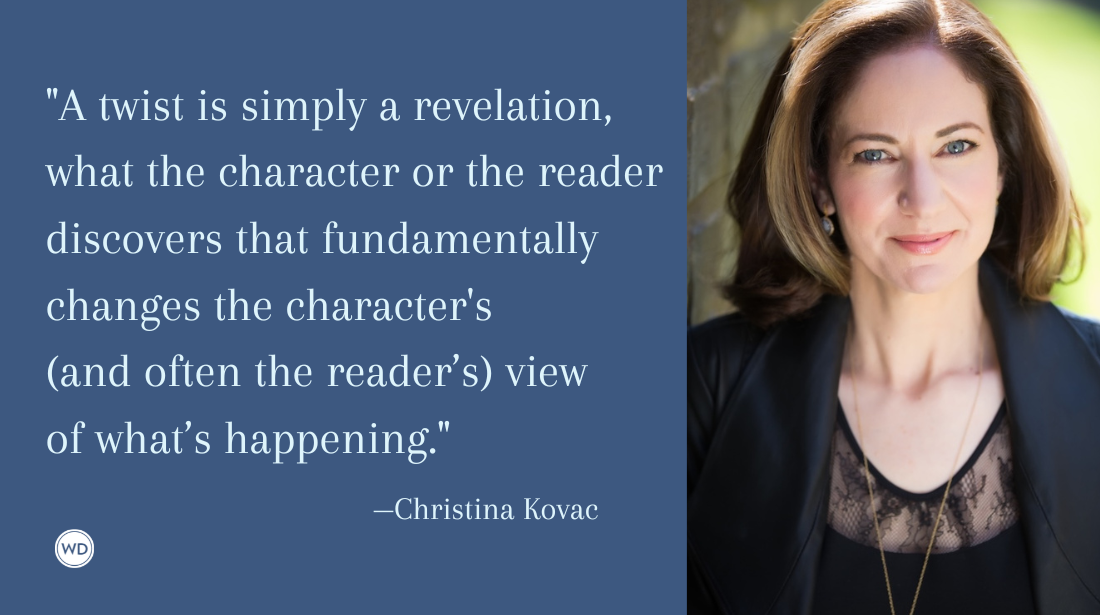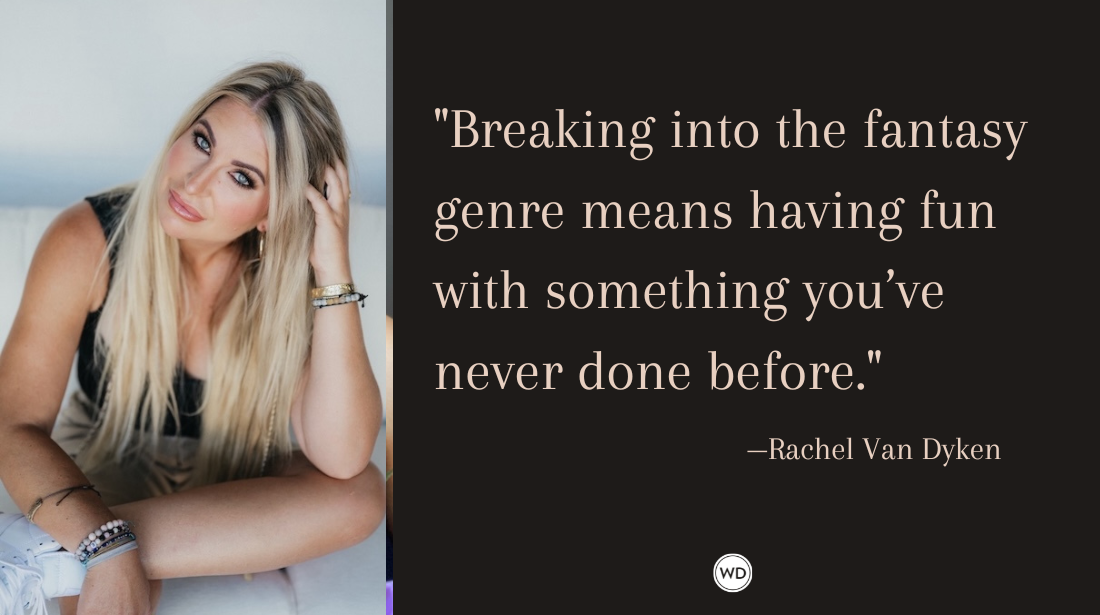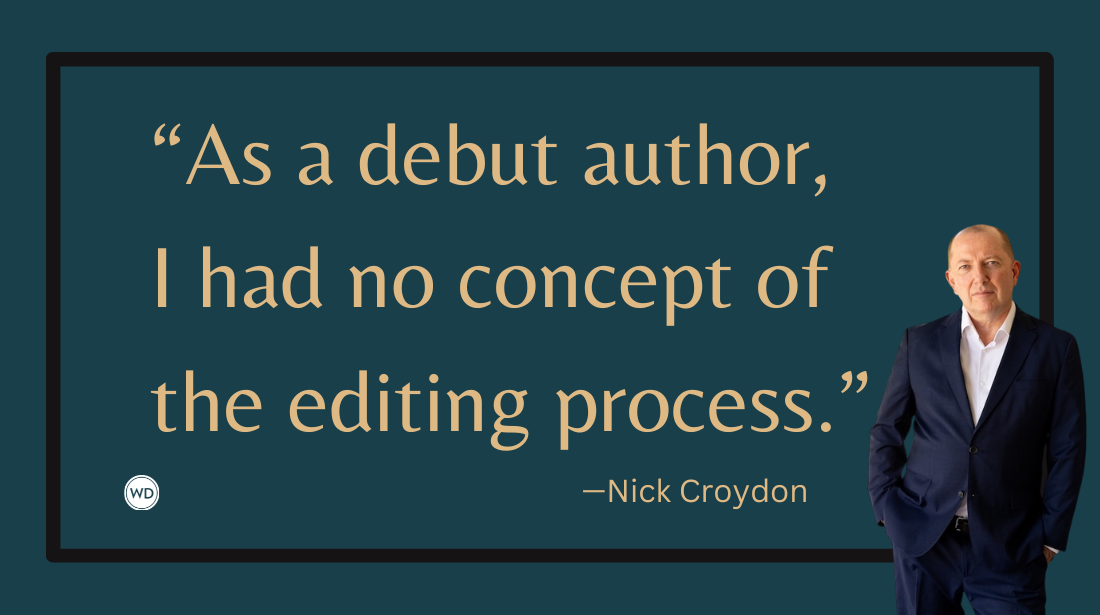A Motherhood Monster Mash-up
Combining women’s fiction and horror offers new insights on human experiences, societal expectations, and what it’s like to try to have it all.
[This article first appeared in the March/April 2025 issue of Writer's Digest.]
What Is a Women’s Fiction Horror Mash-Up Anyway?
It took me a long time to realize I’m a relationship writer. It took me even longer to realize that I’m not unique in this and that relationships are the fiction writer’s primary task. Using all the craft tools at our disposal, engaging our readers in a way that doesn’t feel like a lecture is challenging. We aim to create fresh worlds for our readers to explore with relatable characters. Blake Snyder in Save the Cat! shares that a Hollywood studio executive once told him, “Give me the same thing, only different.” This concept is key to why mashups hook readers because we’re delivering a fresh spin on a familiar experiences.
But what is a mash-up, anyway? It’s any union of multiple genres that, at first glance, appear unrelated. The beauty of a mash-up is finding commonalities where there would appear to be none. However, digging below the surface, we can find fresh takes on human experiences and material ready for exploration.
If you are new to the mash-up concept, consider the FX series “What We Do in the Shadows.” The story involves four vampires who are centuries old sharing a house on Staten Island. Their story involves navigating the degrading and mundane aspects of daily life as a filmed documentary. This mash-up created is as paranormal mockumentary reality series—and it is genius because it’s all about human relationships. Even though none of us are vampires, we relate to the petty injustices that modern life subjects everyone to, even supposedly powerful creatures.
My most recent mash-up reading obsession is women’s fiction and horror. This new sub-genre binds the emotional depth and relationship-focused narratives typical of women’s fiction and interweaves them with the visceral intensity of horror. The result? A combination that probes into the psychological and emotional turmoil experienced by women, especially mothers, while amplifying those struggles with the grotesque and monstrous. Terrifying and relatable stories that explore the dark side of human relationships? I’m all in! Let’s examine why this new subgenre is obsession-worthy.
Women’s fiction focuses on personal relationships, particularly family dynamics, and the internal lives of women. It’s important to understand that women’s fiction is separate from romance. The romance genre focuses on the journey to an emotionally satisfying ending or happily ever after (HEA) as a couple. Women’s fiction explores identity, domesticity, love, and personal growth, and this genre allows readers to empathize with the female experience of navigating life’s emotional and psychological landscapes. These stories explore real-life issues—career vs. motherhood, self-sacrifice, body image, and the pressures of societal expectations—often in deeply realistic or allegorical terms.
Horror, on the other hand, deals with the darker side of human existence, exploring fear, dread, and anxiety. It isn’t isolated to a particular gender experience. Traditionally, horror taps into primal fears—death, the supernatural, isolation, and the unknown—but at its best, it also shines a light on society’s ills and anxieties. In horror, monsters aren’t always external; they can also represent the monstrous within—the parts of ourselves or society that we prefer to keep hidden. Dread is a significant horror part because it conveys a loss of hope.
These two distinct genres find common ground in a mash-up of women’s fiction and horror with the concept of hope. While horror’s dread signifies a loss of hope, motherhood suggests its abundance. This fusion provides rich terrain for discussing the challenges of womanhood and, more specifically, the complexities of motherhood. Luckily for us, humans are lovely, messy creatures full of contradictions, which makes for interesting character journeys.
In women’s fiction and horror, the call is coming from inside the house. By combining the two genres, it’s possible to examine the darker aspects of motherhood but under the guise of the fantastical. By doing so, it provides a safer atmosphere to explore frustration, rage, and shame because after all, it’s just a story—not a manifesto. Now that we understand these genres let’s look at some specific examples.
Women’s Fiction Horror Mash-Up Examples
Although there has been a recent surge in women’s fiction and horror mash-ups, the 20th-century American author Shirley Jackson has explored similar themes. If you’re unfamiliar with her work, We Have Always Lived in a Castle and The Haunting of Hill House, please discover Jackson’s brilliance! At the time of their publication, her stories unsettled the accepted narrative of a sanitized view of women’s lives. As a result, her work was censored inside and outside the United States. Some of that censorship continues now. Her stories made readers uncomfortable as they challenged ideas about the complexity of women’s lives.
A recent example of the women’s fiction and horror mash-up is Rachel Yoder’s Nightbitch (2021), which details the life of a former professional woman who becomes a stay-at-home mother to her young son. (Nightbitch is also a 2024 film starring Amy Adams.) The plot involves an overwhelmed mother who develops physical and emotional canine qualities. Her journey impacts her relationship with herself, her husband, son, and other women in her community. Her exhaustion on every level challenges her overwhelming love for her son. As she leans into her new canine qualities, she taps into creativity beyond what she experienced before motherhood. Her ideas of identity and creativity are smashed, but she evolves into a more powerful person.
Through the lens of horror, the sacrifices and challenges of motherhood are no longer confined to the domestic realm; they become epic, existential battles. A mother’s fear of losing her identity can become a literal transformation, as in Nightbitch. These monstrous metaphors allow for a more dramatic exploration of real-life struggles, giving readers the emotional satisfaction of a deeply human story while also thrilling them with the suspense and terror of horror.
Additionally, these mash-ups offer an opportunity to critique societal norms. For example, by using the horror trope of transformation, Nightbitch critiques the societal pressure on women to be perfect mothers and successful professionals. The protagonist’s slow metamorphosis into a dog represents the dehumanizing effects of these pressures, offering a sharp commentary on how society views motherhood.
Another excellent example of the women’s fiction horror mash-up is Catriona Ward’s Sundial (2022), which deals with the protagonist’s concern for her young daughter’s safety, her imploding marriage, and her traumatic childhood. It also has one of my favorite first lines in any book: “It’s the chicken pox that makes me sure—my husband is having another affair.”
A haunted house, a family curse, or a dark secret that refuses to stay buried represent the generational trauma often passed from parent to child—these are all employed in Sundial. Home as a safe space is subverted into a setting that feeds on the characters rather than shelters them.
In Sundial, the protagonist’s fear that her daughter has inherited her flaws speaks to the anxiety many parents feel in a world that places increasing pressure on children to succeed while also acknowledging how trauma and dysfunction can be passed down through generations.
What makes the mash-up of women’s fiction and horror so compelling is how it provides fresh insight into the experiences of womanhood and motherhood. By marrying these genres, authors can dig deeper into the complexities of being a woman in modern society while providing readers with the thrill of horror’s high stakes.
Much of motherhood feels like life or death because of the interpersonal drama from navigating all that caring. It is a lot of responsibility with little authority. But by adding horror, characters are much more active. The protagonist in Nightbitch discovers she can advocate for herself more than she ever realized. In Sundial, the protagonist discovers she has a history of murder, and she kills again to save her daughters. These are cathartic storylines for the readers.
Both protagonists are traditionally married, yet their journeys are quite different. Nightbitch’s protagonist undergoes a transformation that empowers her to communicate better with her spouse. She also engages with her son in a more meaningful way. These changes lead her to embrace new qualities about herself, earning respect from not only her husband but also her friends.
The outcome in Sundial is an implosion of the family unit. The protagonist discovers she has failed to judge the threats in her family, both past and present. As a result, she learns truths that force her to accept herself. Moving past blame and shame, she accepts responsibility for her choices to protect her daughters.
Why Is the Women’s Fiction and Horror Mash-Up Relevant Now?
Our society currently faces economic, environmental, and societal challenges for women. Horror fans find a new emotional depth in the mash-up, while readers of women’s fiction appreciate the visceral thrill that horror adds to these familiar themes.
Medical advancements and dietary obsessions encourage mothers to turn back the clock to “before baby.” We’re encouraged to breastfeed, be hands-on parents, and yet “lean into our careers” so we don’t get left behind professionally. Popular culture and social media advise mothers to multitask and be disciplined enough to “have it all.” Failing at work-life balance is yet another hurdle for mothers.
It’s a relief to seek solace in the horror genre, which reminds us that life is full of the unexpected and often goes off the rails completely. Motherhood is a quest into chaos, especially when raising small humans. Horror is the antidote to experiencing life in tidy boxes. Emotions like rage, resentment, and ambivalence are common to both motherhood and horror. By combining them in a familiar setting, such as family life, we can explore tensions between spouses, siblings, friends, and family under the guise of monsters.
Practical Considerations Involving Mash-ups
Mash-ups reflect the oft-quoted fiction writing mantra: complex characters, simple plot. No matter the setting, our writing is rooted in human experiences.
Women’s fiction and horror utilize common settings, namely a residence, which is a forced proximity trope. Popular horror tropes enclosing a family in a haunted house or isolated setting easily translate to women’s fiction. Imagine a family snowbound for the holidays as an adventure that begins cheerfully enough, but by day three, everyone is heading for the exits.
In horror, we expect the forced proximity trope to create conflict. In women’s fiction, the home is initially seen as a refuge but then transforms into a battleground when horror is added. In Nightbitch, the protagonist chooses to be a stay-at-home mom but finds her isolation as a result is traumatic. Her former colleagues and even her husband treat her choices with contempt. Protagonists in both novels react as if in a war in terms of fatigue, struggling with food and safety.
Additional tropes that focus on emotions such as love, regret, shame, desire, jealousy, revenge, and redemption are foundational to storytelling because they are examples of common experiences. These are found in both genres and play off each other well because they aren’t expected.
Think about what tropes such as secrets and scars represent in the context of family life and how that can be amplified by using horror elements. Consider that everyone in a family has secrets and scars (because don’t we all?) and what they will do to prevent exposure. That is character motivation that fuels story conflict and keeps readers turning pages.
Character goals, motivation, and conflict combined with tropes, plus understanding the genre’s expectations of women’s fiction and horror, make this an exciting developing subgenre.
Interested in more examples of this mash-up? Check out The Need by Helen Phillips, The Push by Ashley Audrain, and The Harpy by Megan Hunter.
Ultimately, the mash-up of women’s fiction and horror allows authors to give familiar stories of motherhood, identity, and family new life. By adding elements of horror, these stories not only explore the darker side of these relationships but also provide fresh insights into the emotional and psychological struggles that women, particularly mothers, face.
This genre-blending allows for a deeper examination of personal relationships while heightening the stakes through horror’s monstrous metaphors. As more authors experiment with this mash-up, readers can expect to see even more innovative and thought-provoking stories that challenge traditional narratives and offer new insights into the human experience.



